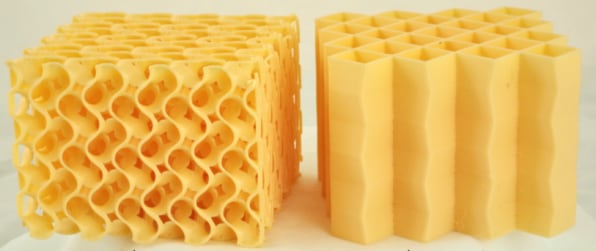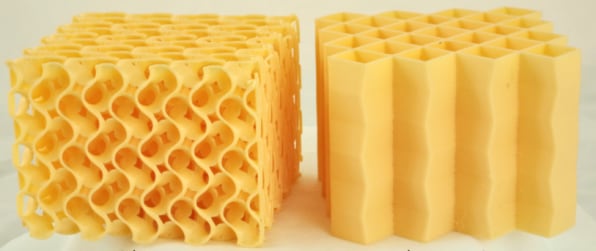
09 Feb Can this AI-designed miracle material help fix the NFL’s injury problem?
As the NFL season comes to an end with the TV commercial fest we call Super Bowl LVIII, we can’t ignore this statistic: The number of total concussions in 2023 was 219, up from 213 in 2022. It’s a number that Robert MacCurdy, an assistant professor in mechanical engineering at the University of Colorado Boulder, can’t ignore, either. MacCurdy and his team partnered with Sandia National Laboratory to create an extraordinary material capable of absorbing 25% more shock than typical foam—something that could be used in football helmets or any kind of protective equipment, for that matter.

What they developed is called a metamaterial, which describes a synthetic material engineered to have capabilities that naturally occurring materials cannot. Your phone’s antenna is a metamaterial, as are the superlenses that can magnify objects beyond typical glass. In the case of MacCurdy’s foam, the 25% boost in shock absorption comes from the weirdly curled 3D design of the 3D printed material.
In a study of the new technology just published in the scientific journal Advanced Materials Technologies, the team described how its metamaterial can avoid the limitations of traditional protective foams. While a typical foam can absorb some impact forces, it reaches a point where it compresses into a rigid solid. That eliminates its protection factor. But MacCurdy’s metamaterial makes the foam into a “superfoam” that can absorb a lot more force.
That kind of additional protection could mean saving a lot of neurons if it ever reaches the NFL and other sports that require shielding from violent impacts. But it’s not just for sports. The material’s potential benefits apply to any other field that requires better shock absorption, like packaging of fragile objects or highway barriers.
AI to the rescue once again
MacCurdy explains over email that custom AI models helped develop the foam’s strangely biological shape. Using a software called Abaqus, they were able to simulate how different repeating geometric shapes can affect the ability of the foam to absorb more or less force. Then they tried them in real life to see how they performed, developing an artificial intelligence model that could predict the protective factor of various AI-generated designs. The AI came up with a shape that mimicked the structure of accordion bellows arranged on a scale of a millimeter or less. This is what allows the metamaterial to collapse in a controlled manner to absorb forces efficiently.
The team 3D printed the pattern using thermoplastic polyurethane using a standard printer. For sports applications, foam is ideal because of its light weight. But this metamaterial also works with any material for other kind of applications, because it is the geometry of the design that gives it the 25% boost factor. For other applications, like packaging and highway barriers, you can get exactly the same metamaterial “superpower” using various plastics, and metals like aluminum.
To test the material, MacCurdy says his team made measurements in the lab by simulating impacts of different forces, like the one you can see in the videos above. While the lab results show how effective this metamaterial is at absorbing impact forces, the team has yet to deploy them in situ, like in a helmet or kneepad using crash test dummies.
Taylor Swift should fund this stuff
The next step is full size manufacturing and testing in real environments, MacCurdy tells me. The project to take it into the real world would take about two years, he says, after which they would have data supporting the efficacy in specific applications. “I hope to secure funding in order to work more on the applications which would certainly involve larger scale and more specific applications, like helmets and pads,” he describes.
When I jokingly told MacCurdy that Taylor Swift should fund the research to take this out of the lab and into the production line, he laughed and replied, “I fully agree, Taylor Swift should fund this!” So, there you have it, Ms. Swift. This cool metamaterial may protect Travis Kelce and other sports people’s brains and bones one day.
Source: Fast Company




Sorry, the comment form is closed at this time.